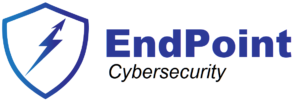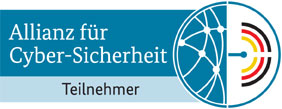Understanding ISO 27001:2022 Annex A.12 – Operations Security
We started the ISO 27001:2022 series with the promise of explaining how the 14 categories of controls can be implemented.
Today we address ISO 27001:2022 Annex A.12, “Operations Security”, which focuses on ensuring secure operations of information systems and assets. This annex provides guidelines for implementing controls to manage day-to-day operations, protect against security incidents, and maintain the integrity, availability, and confidentiality of information assets.
Importance of Operations Security
Operations security is critical for maintaining the effectiveness and resilience of information systems and assets. Annex A.12 underscores this importance by:
- Risk Management: Implementing operational controls helps identify, assess, and mitigate risks to information assets, ensuring business continuity and protecting against security incidents.
- Incident Response: Establishing incident response procedures enables organizations to detect, respond to, and recover from security incidents effectively, minimizing the impact on operations and data integrity.
- Change Management: Managing changes to information systems and assets in a controlled manner helps prevent unauthorized modifications, configuration errors, and disruptions to services.
Implementing Annex A.12 in Practice
To effectively implement Annex A.12, organizations can follow these practical steps:
- Risk Assessment: Conduct regular risk assessments to identify potential threats, vulnerabilities, and risks to information assets. Assess the likelihood and impact of identified risks to prioritize mitigation efforts.Example: Perform a comprehensive risk assessment of IT systems, networks, and applications to identify vulnerabilities, such as outdated software or misconfigured settings, that could expose assets to security threats.
- Incident Management: Establish incident response procedures to define roles, responsibilities, and actions to be taken in the event of a security incident. Develop incident response plans, escalation procedures, and communication protocols.Example: Develop an incident response playbook outlining steps to be followed in case of a security breach, including incident detection, containment, eradication, recovery, and post-incident analysis.
- Monitoring and Logging: Implement monitoring and logging mechanisms to track user activities, detect anomalies, and identify potential security incidents. Collect and analyze log data from information systems, networks, and security devices.Example: Deploy security information and event management (SIEM) systems to aggregate and correlate log data from various sources, enabling real-time monitoring, alerting, and analysis of security events.
- Change Control: Establish change management procedures to control and document changes to information systems, applications, configurations, and infrastructure. Define change request processes, approval workflows, and testing requirements.Example: Implement a change management system to track and manage changes to IT assets, including software updates, patches, configuration changes, and infrastructure modifications, following a structured change control process.
- Backup and Recovery: Implement backup and recovery procedures to protect against data loss, corruption, and unauthorized access. Regularly back up critical data and systems, and test backup restoration procedures.Example: Configure automated backup schedules for critical databases, files, and systems, ensuring that backup copies are stored securely and can be restored in the event of data loss or system failure.
- Protection against malware: Implement detection, prevention and recovery controls to protect against malware, combined with appropriate user awareness training.
Audit of Compliance with Annex A.12
Auditing compliance with Annex A.12 is essential for evaluating an organization’s adherence to operational security requirements. Here’s how the audit process typically unfolds:
- Audit Preparation: Gather documentation related to operational security policies, procedures, and controls. Appoint an audit team to facilitate the audit process.
- Audit Planning: Define the audit scope, objectives, and criteria. Develop an audit plan outlining activities, timelines, and responsibilities of auditors and auditees.
- On-site Audit: Conduct on-site visits to assess implementation of operational security controls. Review documentation, interview personnel, and observe operational practices. Use checklists or assessment tools to evaluate compliance.
- Audit Findings: Analyze findings and identify areas of non-compliance or improvement opportunities. Document observations, including strengths and weaknesses in operational security implementation.
- Reporting: Prepare an audit report summarizing findings, conclusions, and recommendations for corrective actions. Share with senior management and stakeholders for review and action.
- Follow-up: Address audit findings by implementing corrective actions and improvements as recommended. Conduct follow-up audits to verify effectiveness of corrective measures and ensure ongoing compliance.
Conclusion
ISO 27001:2022 Annex A.12 emphasizes the importance of operational security in maintaining the effectiveness, resilience, and integrity of information systems and assets. By implementing robust controls and procedures for risk management, incident response, change control, and backup and recovery, organizations can mitigate risks, protect against security incidents, and ensure business continuity. Regular audits help assess compliance with Annex A.12 requirements and drive continuous improvement in operational security practices.
The post Understanding ISO 27001:2022 Annex A.12 – Operations Security first appeared on Sorin Mustaca on Cybersecurity.


